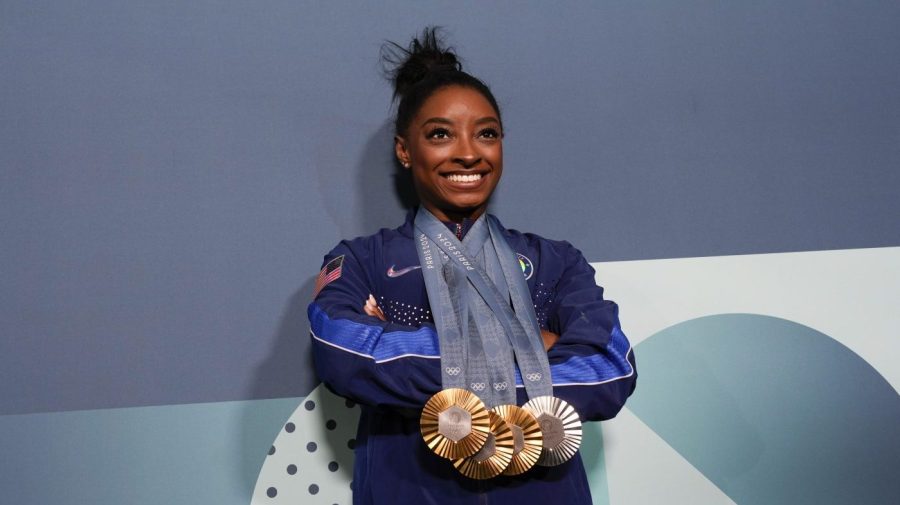
Despite the success of Team USA at this year’s Olympics, mental health concerns are more prevalent than ever for America’s athletes, from the elite level to young developing athletes.
The need was so great that Team USA employed an unprecedented 15 full-time mental health staff to travel to Paris. One psychologist reported afterward that he worked 18-hour days counseling the athletes for an array of issues. Simone Biles said that the morning of her gold medal-winning performance, she started her day with a therapy session. Gold medalist Noah Lyles shared that he has been diagnosed with ADHD, anxiety and depression.
What isn’t discussed is that younger children who take part in organized sports are also struggling. The American Academy of Pediatrics found that 70 percent of kids are quitting sports by the age of 13 because they are burned out and no longer having fun.
America’s sports programs are harming our young peoples’ mental health. Instead of fostering a young athlete’s love of the sport, many programs put immense pressure on children and their families. They signal that self-worth is wholly tied to being an athlete and expose young people to bad coaching and a cut-throat culture where athletes are easily replaceable. All these things lead to a variety of mental health problems, including anxiety, depression and eating disorders.
Most youth sports systems use a pay-to-play model, pressuring young athletes and their families who invest heavily in participation. This often ties children’s self-worth to their teams, performance and stats, leading to high rates of dropping out.
Athletes who persist remain on a relentless conveyor belt. Expectations grow, and the investment — financial, physical and emotional — rises. The stakes become higher as the league demands more. Clinically, this period often yields a spike in mental health issues among athletes, who are expected to excel under immense pressure.
College recruiting transforms high school sports from a fun experience into a high-stakes pursuit of impressive stats to secure scholarships and attract college coaches. In some cases, recruitment begins as early as middle school.
Once in college, athletes often face poor coaching and a lack of support. Meanwhile, the intense pressure on coaches leads them to project their stress onto athletes through abusive tirades and desperate pleas, fearing for their jobs if the athletes don’t perform.
College athletes face relentless pressure to continuously improve, although true greatness requires overcoming setbacks. But the college athletic system often abandons athletes at the first sign of difficulty or plateau, quickly moving on to the next promising talent. At this critical point, many athletes subconsciously decide to push themselves beyond their limits, striving to perform at any cost.
Sports programs, parents and coaches need to recognize that the “American Dream” mindset doesn’t apply the same way in sports. Success in athletics isn’t a straight path — simply playing more hockey, baseball or soccer, or spending more money on elite leagues and private coaching, doesn’t guarantee a child will become a star athlete. This one-size-fits-all, linear approach fails to develop well-rounded athletes and puts undue pressure on their mental health. Understanding that athletic success is complex and nonlinear is key to nurturing both performance and well-being.
College sports departments must significantly improve their support for athlete mental health. Although the NCAA emphasizes the importance of mental wellness, many athletic programs remain critically under-resourced in this area. Consider that in Division 1 programs, a single mental health therapist is often expected to serve around 500 athletes — an unrealistic and unsustainable load. (A therapist in private practice typically manages about 30 clients.)
To ensure proper care, each college team should have at least one licensed mental health therapist specialized in working with athletes. For larger teams, having two or three licensed therapists is crucial. While we are not yet at this ideal level, a reasonable goal is at least one licensed therapist for every 75 student-athletes — a significant step toward ensuring that athletes receive the care they need and deserve.
To enhance athlete well-being and performance, college athletic systems should also prioritize nurturing an athlete’s inner drive, rather than fear and approval-based competition. Research shows that athletes driven by enjoyment and internal motivation tend to excel and stay engaged longer. Such a shift not only helps reduce burnout but also leads to better outcomes for teams, coaches and schools.
Preventative and proactive support systems, regular mental health screenings, accessible counseling and open communication are essential. By routinely checking in with athletes, expressing genuine concern and supporting them as whole individuals, we can help them build confidence and excel both in their sport and their personal lives.
We must shift our focus to nurturing young athletes’ love of sport, decreasing abusive coaching practices and providing strong mental health support. By making these changes a priority, we can transform the sports culture, better support young athletes and ensure their sports experiences contribute positively to their overall development.
This op-ed is part of The Hill’s “How to Fix America” series exploring solutions to some of America’s most pressing problems.
Dr. Tiffany Brown and Katie Steele are the founders of the Athletes Mental Health Foundation and authors of “The Price She Pays: Confronting the Hidden Mental Health Crisis in Women’s Sports―from the Schoolyard to the Stadium.”

